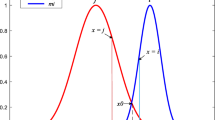Abstract
Common reinforced concrete (RC) damage includes exposed rebars, spalling, and efflorescence, which not only affect the aesthetics of facilities but also cause structural degradation over time, setting the stage for further severe RC degradation that would reduce the strength and durability of the structure. Damage to RC facilities occurs because of their natural deterioration. Machine learning can be employed to effectively identify various damage areas, and the findings can serve as a reference to management units in the task of ensuring the structural safety of facilities. In this study, a damage image was used to evaluate image classification capabilities achievable through maximum likelihood and random forest supervised machine learning methods. With these methods, accuracies of 98.6% and 96% were achieved for RC damage classification, respectively. The results of this study demonstrate that the use of machine learning can yield favorable results for damage image classification.
Access this chapter
Tax calculation will be finalised at checkout
Purchases are for personal use only
Similar content being viewed by others
References
Spencer, B.F., Hoskere, V., Narazaki, Y.: Advances in computer vision-based civil infrastructure inspection and monitoring. Engineering 5(2), 199–222 (2019)
Valero, E., Forster, A., Bosché, F., Hyslop, E., Wilson, L., Turmel, A.: Automated defect detection and classification in ashlar masonry walls using machine learning. Autom. Construct. 106, 102846 (2019)
Dawood, T., Zhu, Z., Zayed, T.: Machine vision-based model for spalling detection and quantification in subway networks. Autom. Constr. 81, 149–160 (2017)
Guldur Erkal, B., Hajjar, J.F.: Laser-based surface damage detection and quantification using predicted surface properties. Autom. Constr. 83, 285–302 (2017)
Mizoguchi, T., et al.: Quantitative scaling evaluation of concrete structures based on terrestrial laser scanning. Autom. Constr. 35, 263–274 (2013)
Hüthwohl, P., Lu, R., Brilakis, I.: Multi-classifier for reinforced concrete bridge defects. Autom. Construct. 105, 102824 (2019)
Rubio, J.J., et al.: Multi-class structural damage segmentation using fully convolutional networks. Comput. Indust. 112, 103121 (2019)
Athanasiou, A., Ebrahimkhanlou, A., Zaborac, J., Hrynyk, T., Salamone, S.: A machine learning approach based on multifractal features for crack assessment of reinforced concrete shells. Comput. Aided Civil Infrastruct. Eng. 35(6), 565–578 (2020)
Okazaki, Y., Okazaki, S., Asamoto, S., Chun, P.: Applicability of machine learning to a crack model in concrete bridges. Comput. Aided Civil Infrastruct. Eng. 35(8), 775–792 (2020)
Li, G., Zhao, X., Du, K., Ru, F., Zhang, Y.: Recognition and evaluation of bridge cracks with modified active contour model and greedy search-based support vector machine. Autom. Constr. 78, 51–61 (2017)
Dhital, D., Lee, J.R.: A fully non-contact ultrasonic propagation imaging system for closed surface crack evaluation. Exp. Mech. 52, 1111–1122 (2012)
Amezquita-Sanchez, J.P., Adeli, H.: Synchrosqueezed wavelet transform-fractality model for locating, detecting, and quantifying damage in smart highrise building structures. Smart Mater. Struct. 24(6), 065034 (2015)
Kang, F., Li, J., Dai, J.: Prediction of long-term temperature effect in structural health monitoring of concrete dams using support vector machines with Jaya optimizer and salp swarm algorithms. Adv. Eng. Softw. 131, 60–76 (2019)
Chang, C.M., Lin, T.K., Chang, C.W.: Applications of neural network models for structural health monitoring based on derived modal properties. Measurement 129, 457–470 (2018)
Chi, N.W., Wang, J.P., Liao, J.H., Cheng, W.C., Chen, C.H.: Machine learning-based seismic capability evaluation for school buildings. Autom. Construct. 118, 103274 (2020)
Zhang, C., Chang, C.C., Jamshidi, M.: Concrete bridge surface damage detection using a single-stage detector. Comput. Aided Civil Infrastruct. Eng. 35, 389–409 (2020)
Meijer, D., Scholten, L., Clemens, F., Knobbe, A.: A defect classification methodology for sewer image sets with convolutional neural networks. Autom. Constr. 104, 281–298 (2019)
Kotsiantis, S.B.: Supervised machine learning: a review of classification techniques. Informatica 31, 249–268 (2007)
Yuwono, M., et al.: Unsupervised feature selection using swarm intelligence and consensus clustering for automatic fault detection and diagnosis in heating ventilation and air conditioning systems. Appl. Soft Comput. 34, 402–425 (2015)
Dong, C.Z., Catbas, F.N.: A review of computer vision–based structural health monitoring at local and global levels. Struct. Health Monit. 20(2), 692–743 (2020)
Taffese, W.Z., Sistonen, E.: Machine learning for durability and service-life assessment of reinforced concrete structures: recent advances and future directions. Autom. Constr. 77, 1–14 (2017)
Richards, J.A.: Remote Sensing Digital Image Analysis. Springer, Heidelberg (2013). https://doi.org/10.1007/978-3-642-30062-2
Rokach, L.: Ensemble-based classifiers. Artif. Intell. Rev. 33, 1–39 (2010)
Breiman, L.: Random forests. Mach. Learn. 45, 5–32 (2001)
Castagno, J., Atkins, E.: Roof shape classification from LiDAR and satellite image data fusion using supervised learning. Sensors 18(11), 3960 (2018)
Yaseen, Z.M., Ali, Z.H., Salih, S.Q., Al-Ansari, N.: Prediction of risk delay in construction projects using a hybrid artificial intelligence model. Sustainability 12, 1514 (2020)
Zhou, S., Chen, Y., Zhang, D., Xie, J., Zhou, Y.: Classification of surface defects on steel sheet using convolutional neural networks. Mater. Technol. 51, 123–131 (2017)
Cho, G.S., Gantulga, N., Choi, Y.W.: A comparative study on multi-class SVM & kernel function for land cover classification in a KOMPSAT-2 image. KSCE J. Civ. Eng. 21(5), 1894–1904 (2017)
Mohan, A., Poobal, S.: Crack detection using image processing: a critical review and analysis. Alex. Eng. J. 57, 787–798 (2018)
Rodríguez-Martín, M., Lagüela, S., González-Aguilera, D., Martínez, J.: Thermographic test for the geometric characterization of cracks in welding using IR image rectification. Autom. Constr. 61, 58–65 (2016)
Author information
Authors and Affiliations
Corresponding author
Editor information
Editors and Affiliations
Rights and permissions
Copyright information
© 2022 Springer Nature Switzerland AG
About this paper
Cite this paper
Fan, CL. (2022). Evaluation of Machine Learning Methods for Image Classification: A Case Study of Facility Surface Damage. In: Renault, É., Boumerdassi, S., Mühlethaler, P. (eds) Machine Learning for Networking. MLN 2021. Lecture Notes in Computer Science, vol 13175. Springer, Cham. https://doi.org/10.1007/978-3-030-98978-1_1
Download citation
DOI: https://doi.org/10.1007/978-3-030-98978-1_1
Published:
Publisher Name: Springer, Cham
Print ISBN: 978-3-030-98977-4
Online ISBN: 978-3-030-98978-1
eBook Packages: Computer ScienceComputer Science (R0)




